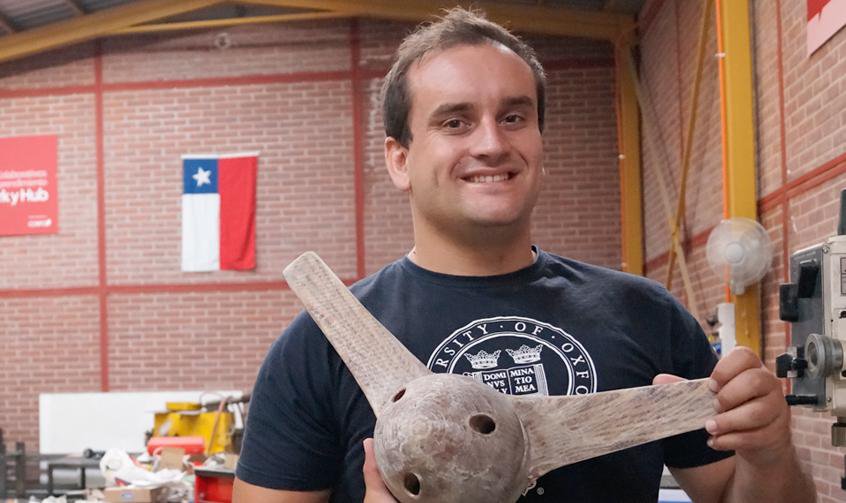"Access to a stable and affordable energy supply is a key factor for economic development. Yet more than 1.2 billion people live with without this access, especially in rural areas where 80% of the population lacks access to an electrical grid, according to data from the International Energy Agency.
Electricity in Chile has, in addition, ""one of the most expensive price scales in the world"". And in rural areas, the electrical transmission price overrun can drive up the prices ""by up to 200%"", the civil engineer Emilio de la Jara explains. To help address the problem of intermittency and high energy costs, this young, Chilean innovator has designed a novel turbine system to provide energy in these areas. His proposal has lead to De la Jara´s inclusion in MIT Technology Review, Spanish Edition´s Innovators Under 35 Chile 2016 awards.
De la Jara is the executive director of Capta Hydro (previously Orbital Stream Energy), the company which develops and commercializes the systems he has designed to leverage the kinetic energy that flows through rivers and irrigation canals. His turbines generate electricity at a small scale in areas outside the conventional distribution grid, and which can be used by agricultural companies situated near these canals.
Capta Hydro´s first product is a hydrokinetic system made up of a base which can house between one and three turbines that are half a meter wide. The irrigation channel must be 0.6 meters wide and at least as deep, with a flow of 1.5 meters per second in order to host this system, which can operate at different depths and speeds, and generates between five kW and 100 kW per turbine installed. This is enough power to supply irrigation projects in isolated areas, farms, homes and vineyards.
The advantage of De la Jara´s system lies in its design, which is capable of converting part of the potential energy into kinetic energy without modifying the canal, which ""greatly increases local speed around the turbine´s blades, increasing the amount of extractable power,"" De la Jara explains. A software program he designed also optimizes the performance of the turbine rotor in diverse circumstances, which ""maximizes the power output and avoids cavitation.""
After multiple trials with previous turbine prototypes, Capta Hydro is currently organizing more trials in the Florida Canal (Chile) in conjunction with the Canal Association of Maipo and Eléctrica Puntilla. These trials will aim to confirm the performance of one of the rotors to be installed in September in a canal in the Chilean state of Negrete, De la Jara explains. There, they will install three, parallel turbines to generate 21.5 kW of power. They are also simulating in the lab the local conditions that their technology´s power measuring equipment will have to endure.
The investment in this system can pay itself off in just three months in the most common irrigation canals, which are lined with concrete and have a flow speed of around 1.5 meters per second, according to the system´s creator. The young civil engineer states that ""generating 50 kW in isolated areas is a lot of energy and much cheaper that generating the same power with solar or diesel [based technologies].""
According to the Distributed Generation act, in effect in Chile since 2014, a customer with residential, power generation systems (of up to 100 kW) based on renewable energy sources can feed their excess energy back into the grid. Capta Hydro´s model takes advantage of this possibility. In the initial phase, they hope to sell electricity to canal associations and small farmers locally, without requiring them to invest in the turbines. De la Jara explains this commercial offer: ""We charge a monthly rate and sell the excess energy to the grid and to farmers, who buy it cheaper than the prices they are paying now.""
Processes like crop irrigation, which have high energy needs, can represent up to 60% of the costs of the agricultural sector in Chile, De la Jara points out. And while in Santiago consumers pay around 0.14 euros per kWh, in Negrete the cost jumps to 0.3 euros per kWh – more than double. Solutions like De la Jara´s would foster competition across the sector, even in the most isolated regions."




